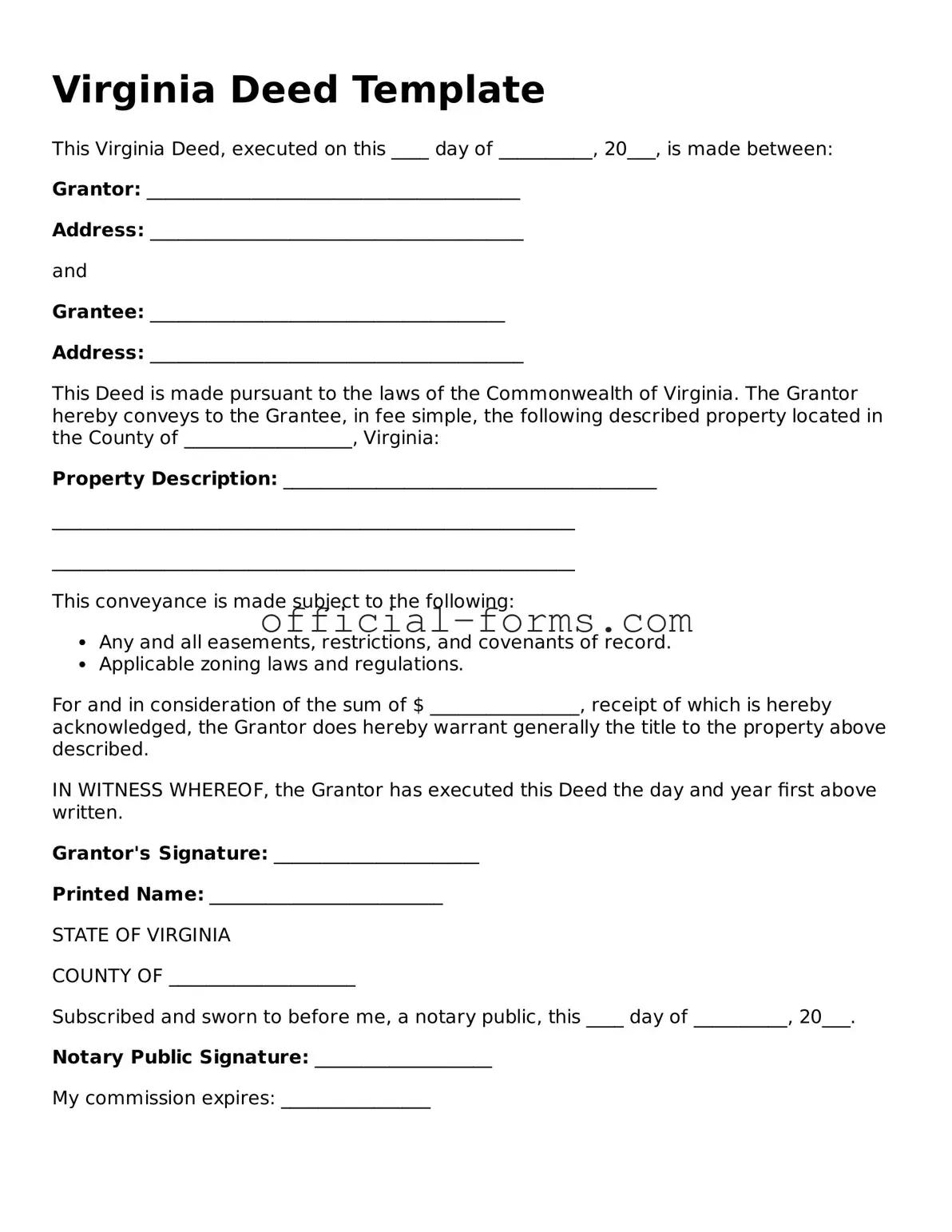Filling out the Virginia Deed form can be a straightforward process, but many individuals make common mistakes that can lead to complications down the line. One frequent error is the omission of the grantor’s name. The grantor is the person transferring the property, and without their name, the deed becomes invalid. It’s essential to ensure that the name is spelled correctly and matches the name on the property title.
Another mistake often made involves the description of the property. A vague or inaccurate description can create confusion regarding what is being transferred. It's important to provide a complete and precise legal description of the property, which typically includes the lot number, block number, and subdivision name, if applicable. Failing to include this information can result in legal disputes or difficulties in future transactions.
People sometimes neglect to include the grantee's name as well. The grantee is the person receiving the property, and just like with the grantor, their name must be accurately recorded. If the grantee’s name is missing or incorrect, it can complicate the transfer process and may even lead to issues in ownership claims later on.
Additionally, many individuals overlook the necessity of signing the deed. A deed without a signature is not legally binding. The grantor must sign the document in the presence of a notary public. This step is crucial, as it adds an extra layer of validation to the transfer.
Another common oversight is failing to date the deed. While it may seem minor, the date is important for establishing the timeline of the property transfer. Without a date, it can be difficult to determine when the transfer took place, which may affect the rights of the parties involved.
Some individuals mistakenly believe that a witness is not required. However, Virginia law requires that certain deeds be witnessed. Not having the appropriate number of witnesses can render the deed invalid. Always check the specific requirements based on the type of deed being executed.
People often forget to check for any liens or encumbrances on the property before completing the deed. If there are existing debts or claims against the property, these must be addressed prior to the transfer. Ignoring this step can lead to financial liabilities for the new owner.
Inaccurate or incomplete tax information can also be a pitfall. The deed must include the correct tax parcel number and any relevant tax identification details. Errors in this information can lead to complications with property taxes and assessments.
Another mistake involves not recording the deed after it has been signed and notarized. Recording the deed with the local county clerk’s office is crucial for establishing public notice of the property transfer. If the deed is not recorded, the transfer may not be recognized, leading to potential ownership disputes.
Lastly, failing to consult with a legal professional can be a significant misstep. While many people feel confident filling out the form themselves, the nuances of property law can be complex. Seeking advice can help avoid costly mistakes and ensure that all legal requirements are met.
